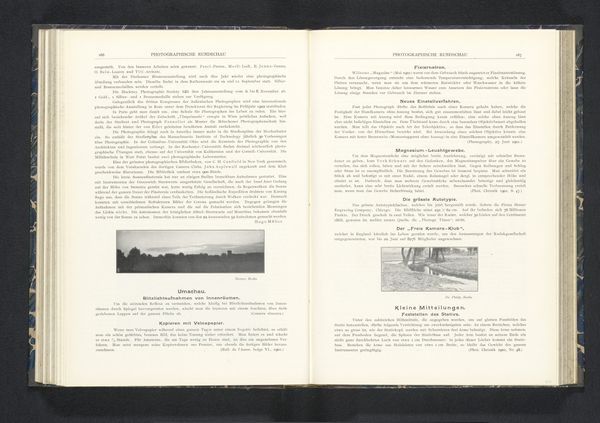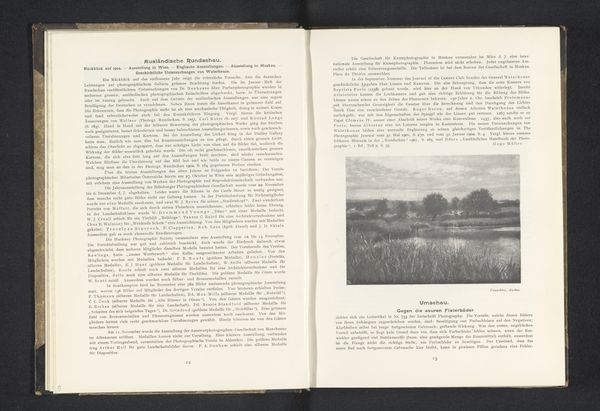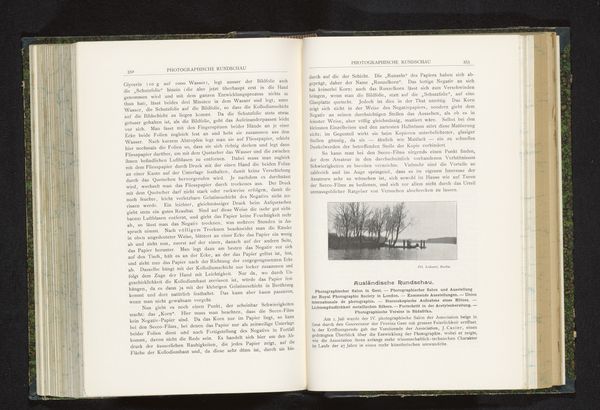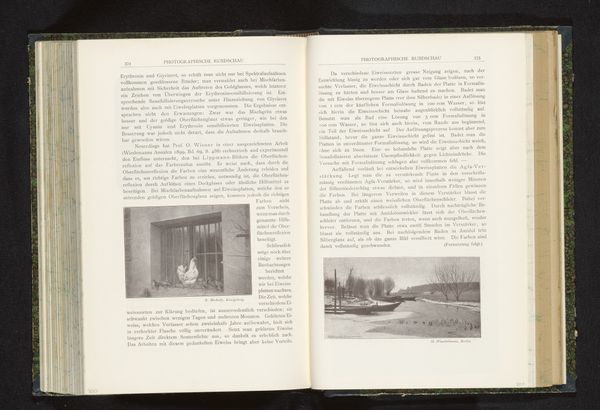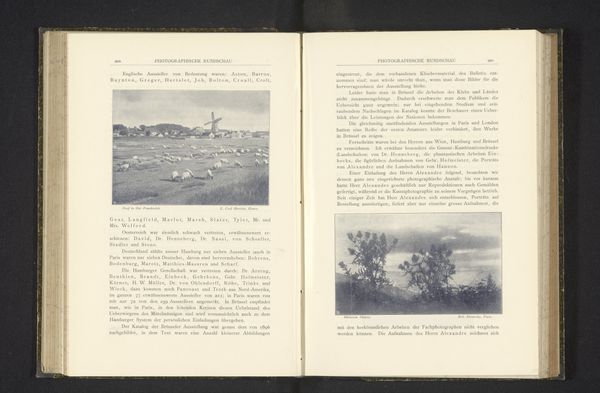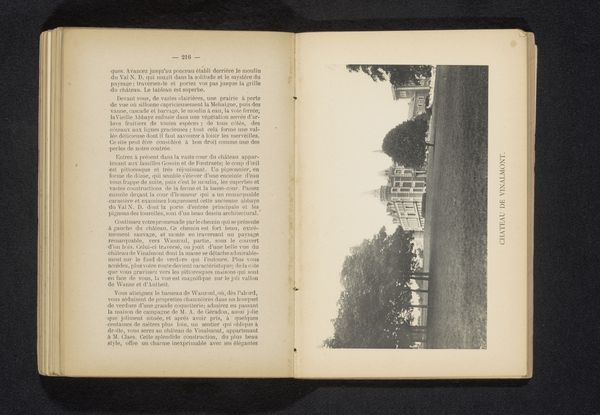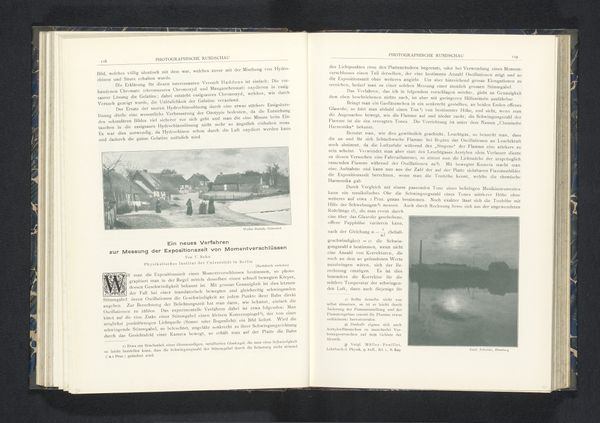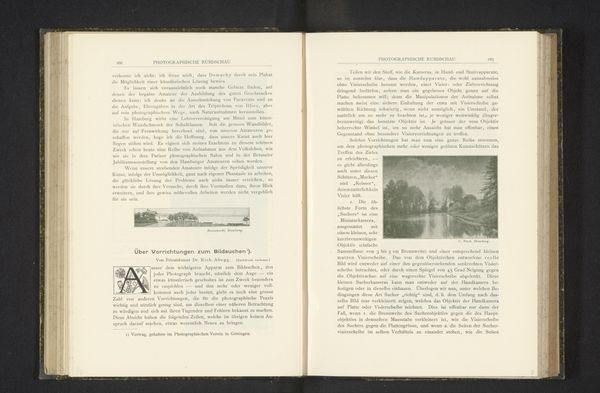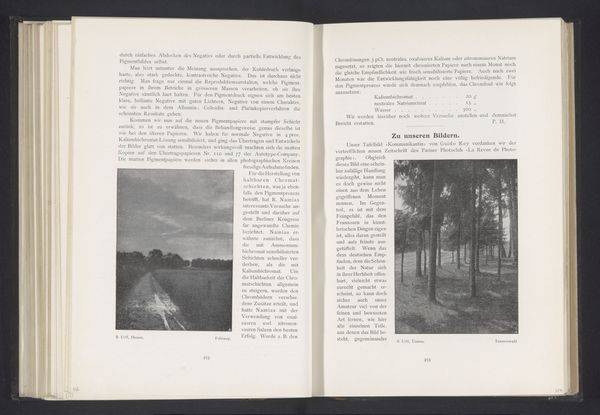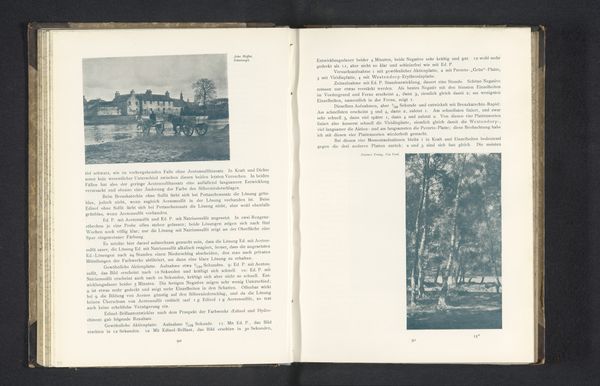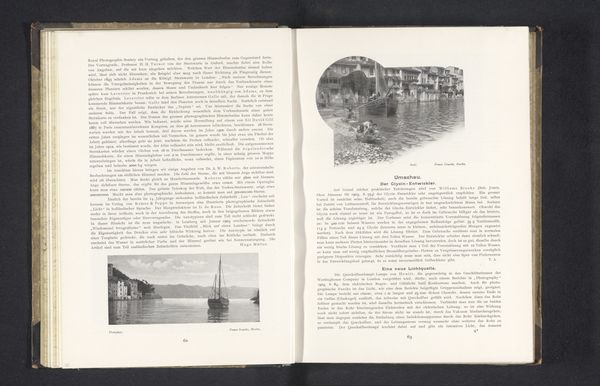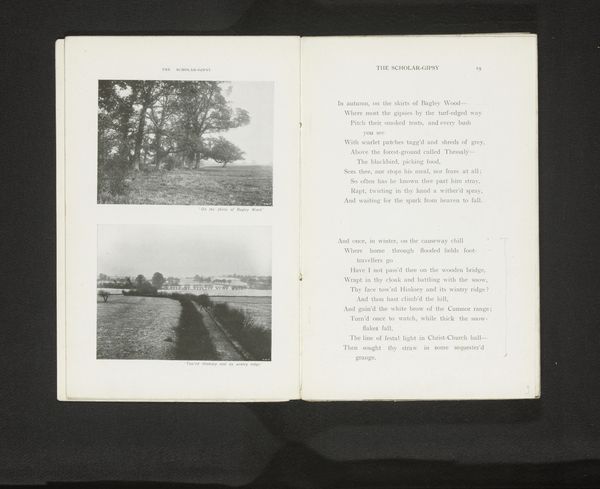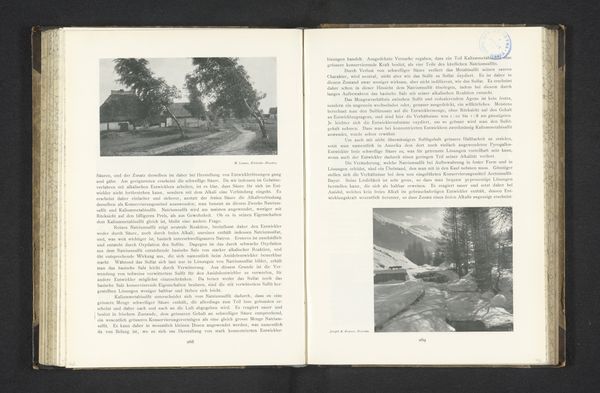
print, photography, gelatin-silver-print
# print
#
landscape
#
photography
#
gelatin-silver-print
#
street
Dimensions: height 149 mm, width 65 mm
Copyright: Rijks Museum: Open Domain
Curator: Let’s have a look at this photograph titled, "Gezicht op een straat met kinderen," dating to before 1901, attributed to John Cimon Warburg. It's a gelatin-silver print that captures a street scene. What strikes you about it? Editor: The somber mood, definitely. It’s created by the heavy use of shadow. The perspective is deep, almost unnaturally so, funneling you down the street. The print medium renders everything in grayscale which only heightens the almost forlorn sensibility. Curator: Grayscale can be loaded with so many things... absence, certainly. But think about what gelatin-silver printing represented then – permanence and the capacity to fix a moment in time and make it re-viewable. And consider the symbolic resonance of children pictured in the photograph, embodying newness or some kind of social future. The dark street could be construed as a challenge to that new beginning. Editor: Interesting reading. But look closer, and the texture in this silver gelatin print makes this street more active. Look at the paving stones and building facades that suggest weight and mass despite being captured in an ephemeral medium. Also, while the photograph renders things in greyscale, it offers an almost unbelievable index of color: all shades existing on the spectrum of darkness and light. Curator: Yes, photography freezes moments that always allude to what happened before and after. Consider those small figures and that play of shadow! Before photography, street life was ephemeral, the figures just passing by. What happens when they become material within this particular configuration of light and space? It's an incredible symbol of stillness set against passing time. Editor: So, for you it's about capturing movement then? To me it's more the structure of what's in view—it’s this particular street scene. With the photographic frame and texture, it is all about what’s perceivable. And with Warburg, it’s all there. It is just very well constructed. Curator: It seems our divergence circles back to our shared interests... you see it materially and formally, I interpret what it signifies as image, and we come to appreciate how remarkable an achievement this early photograph is. Editor: Precisely. Warburg invites you to see what is right there, but with this technique, and this composition, seeing it just a bit more sharply than real life, as it might have been lived.
Comments
No comments
Be the first to comment and join the conversation on the ultimate creative platform.
